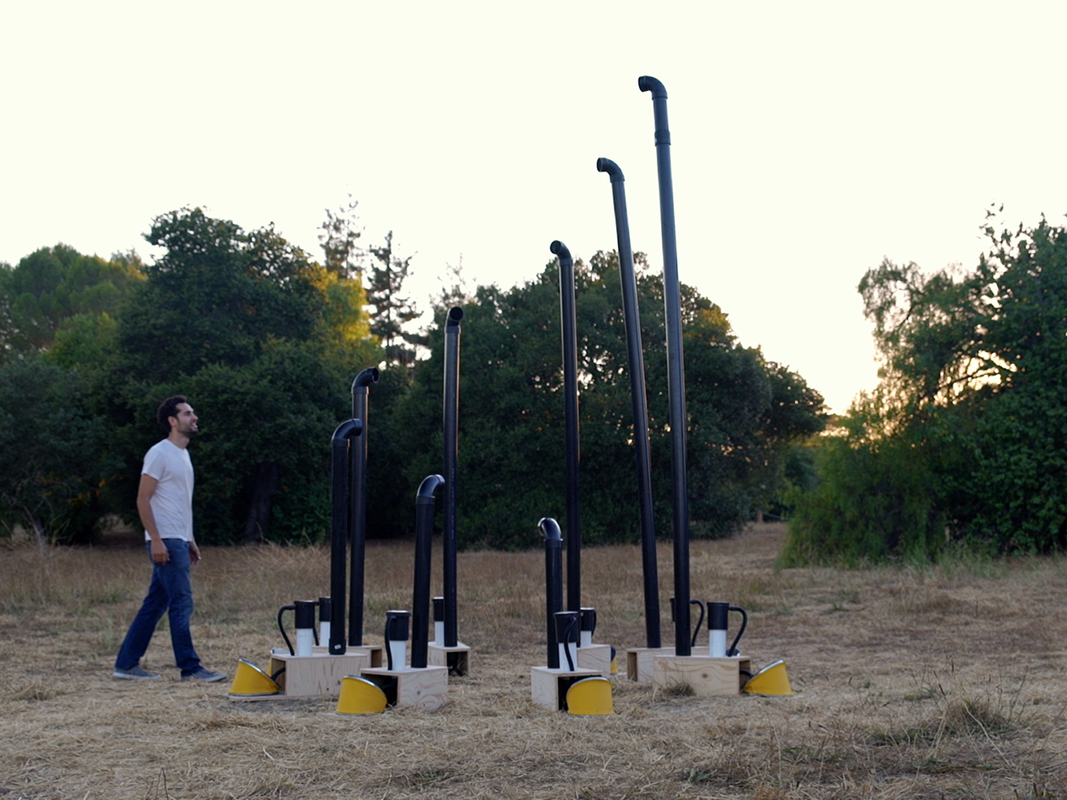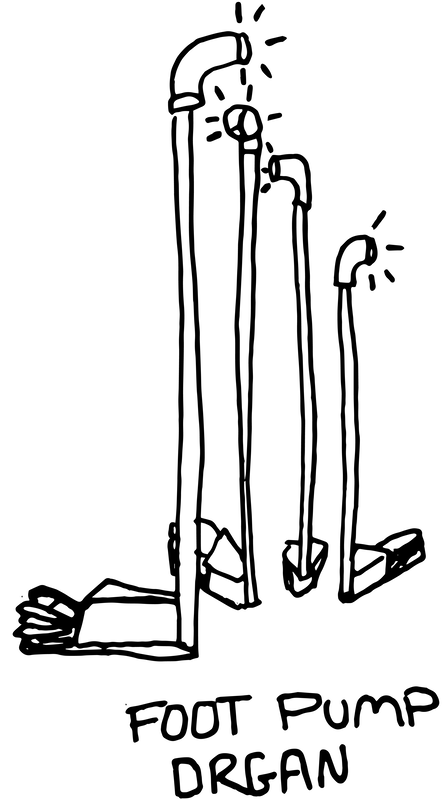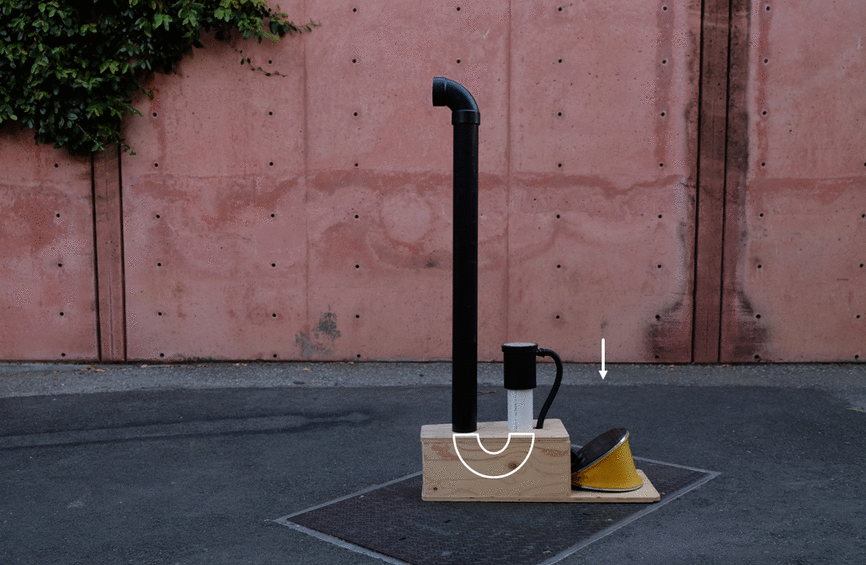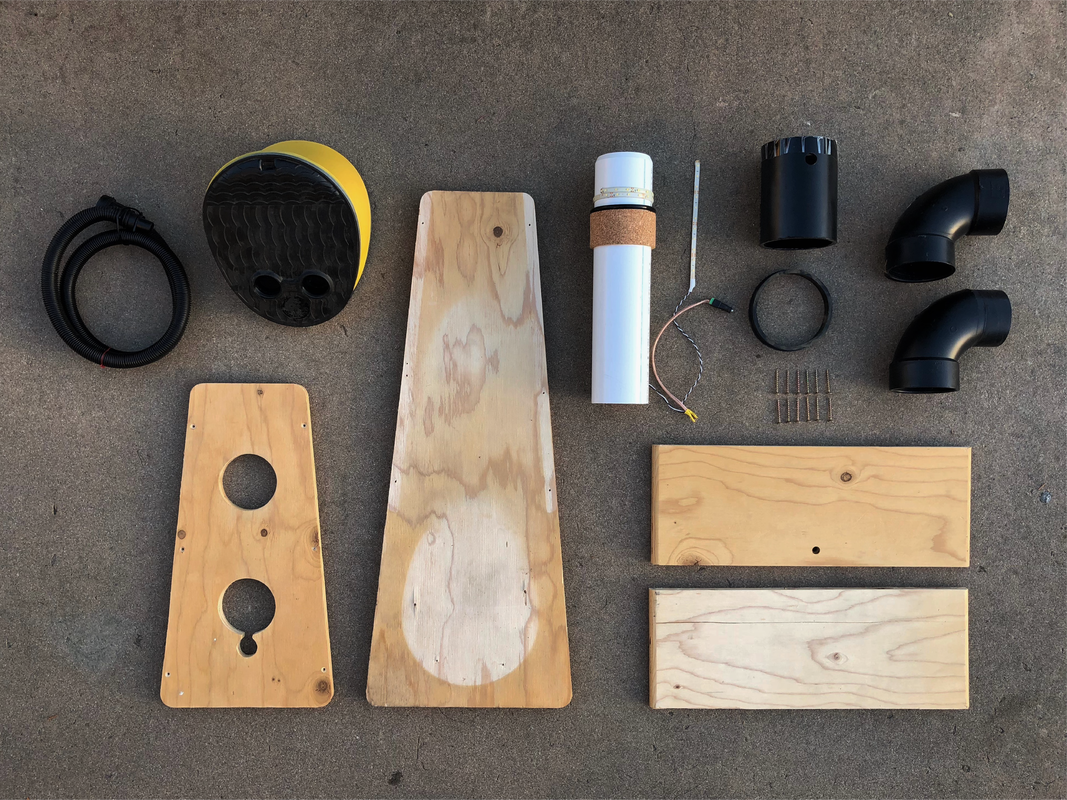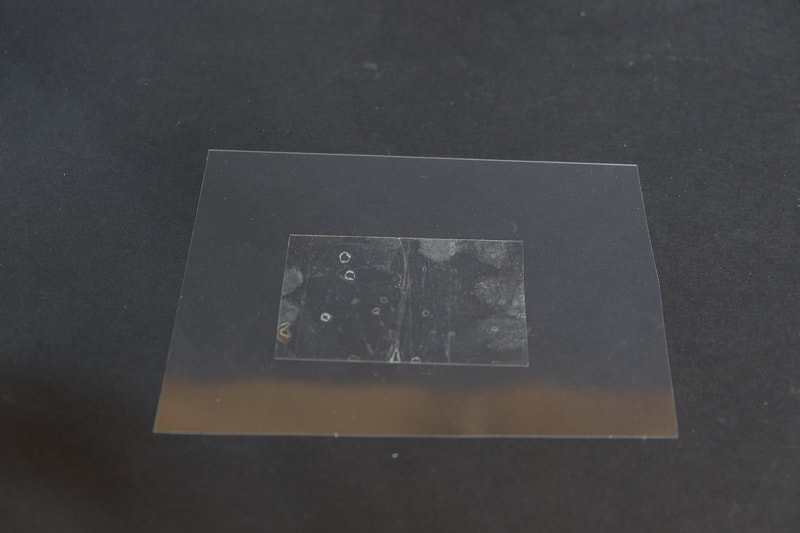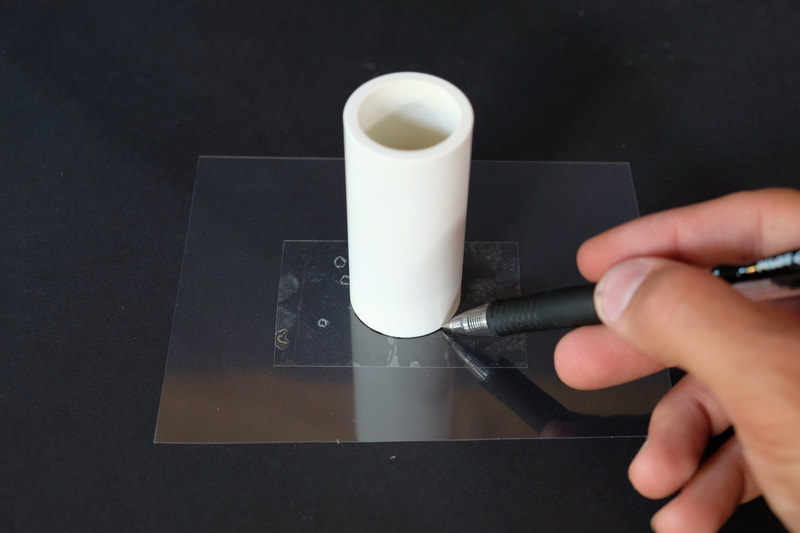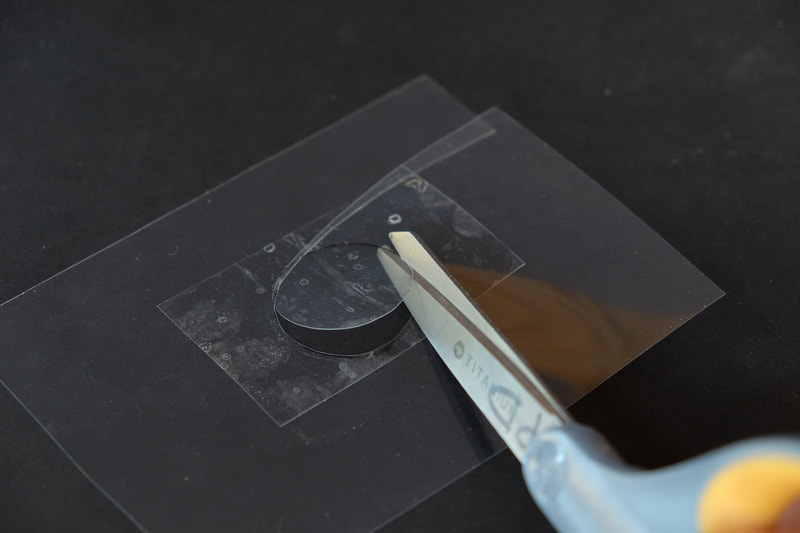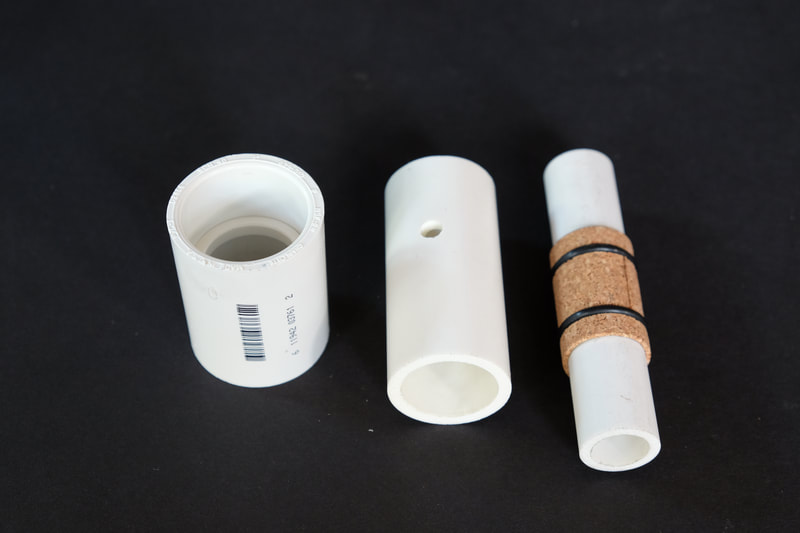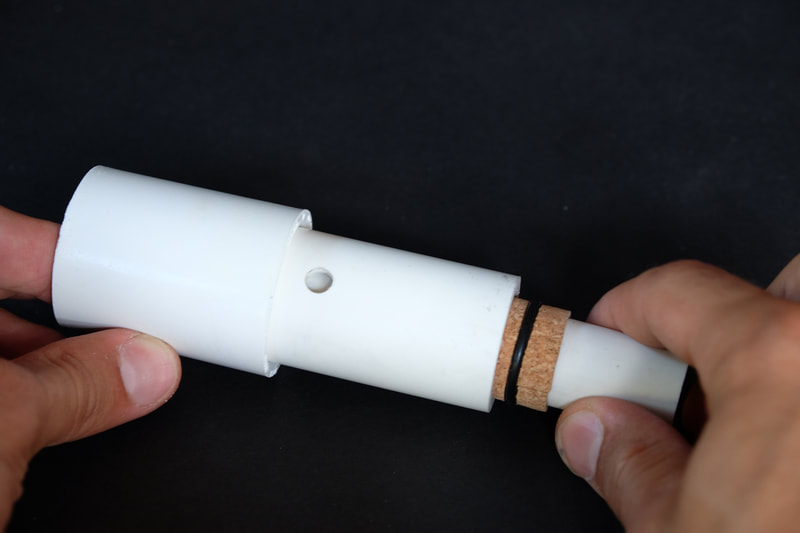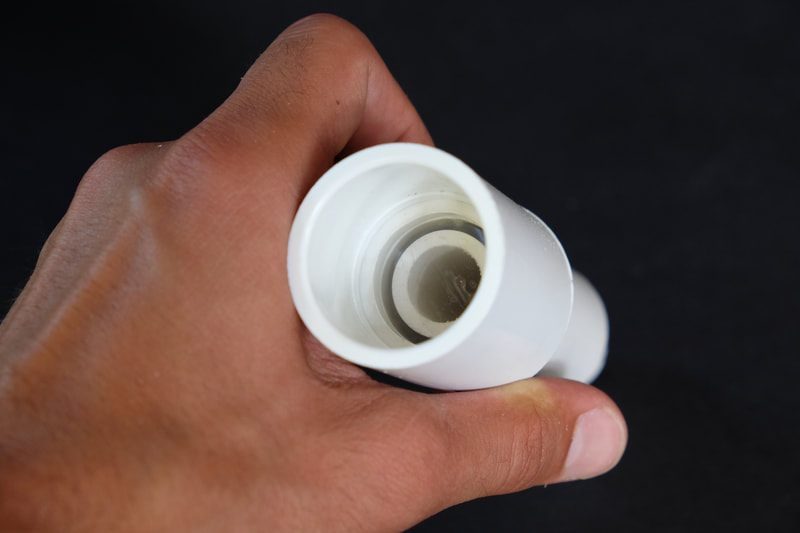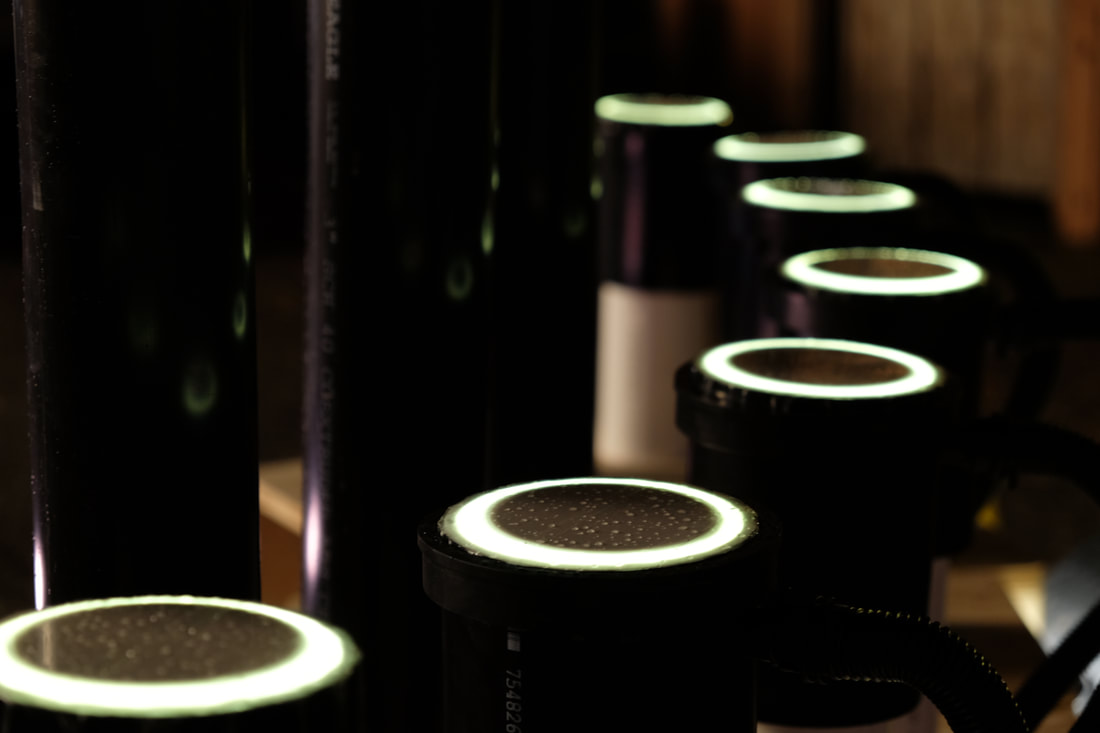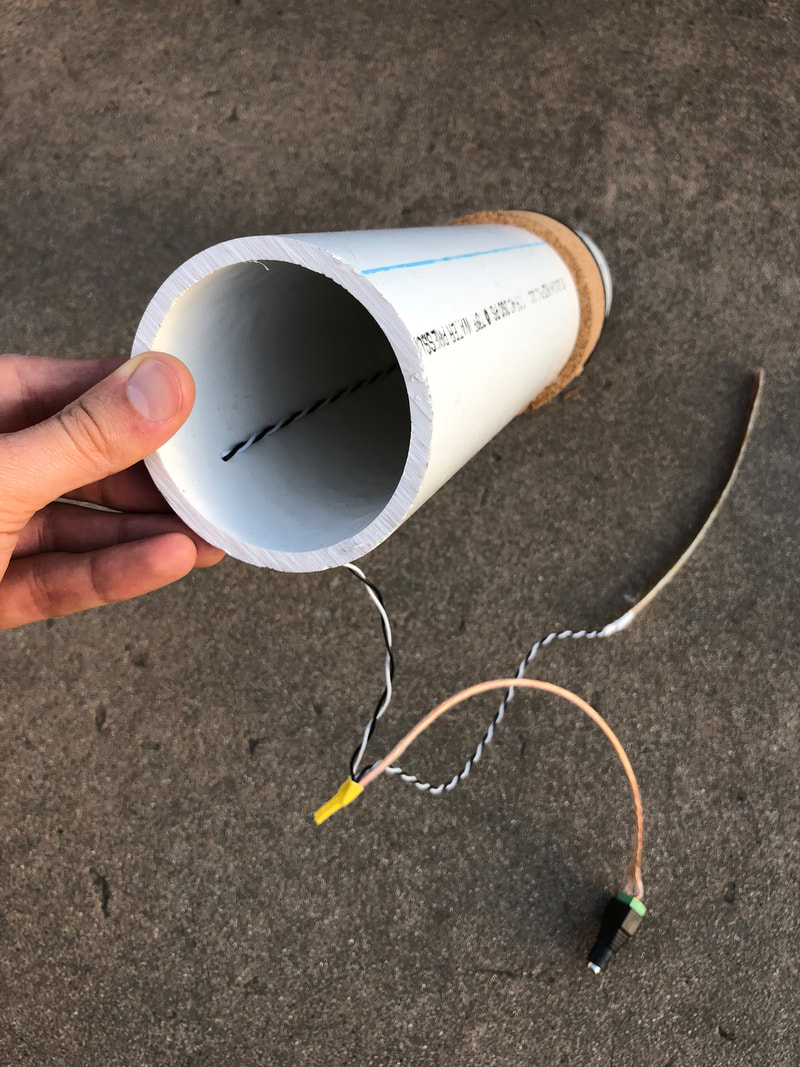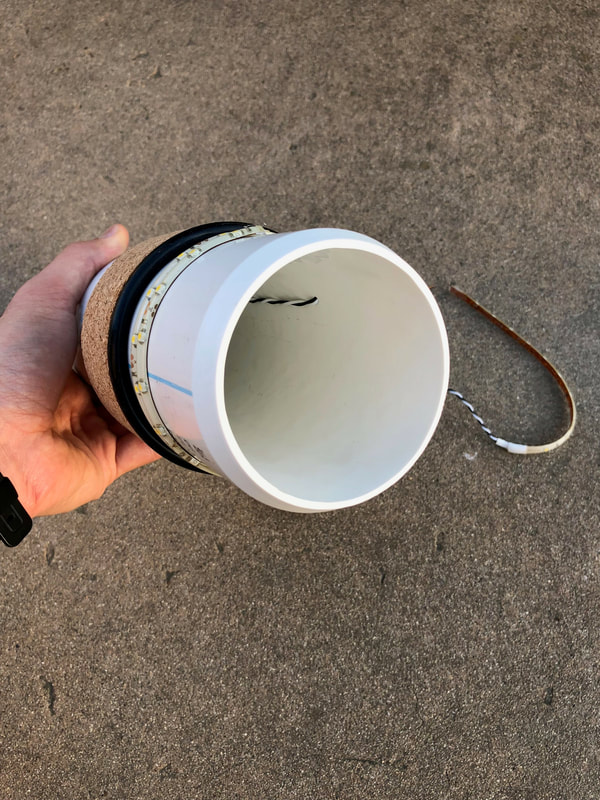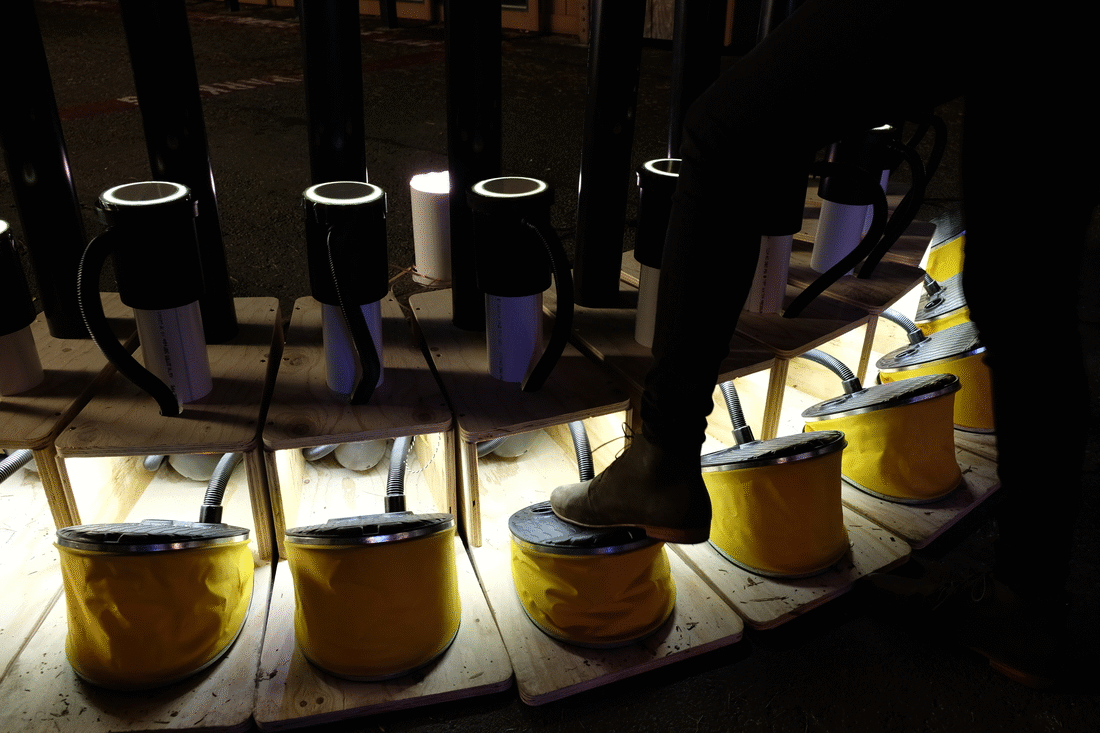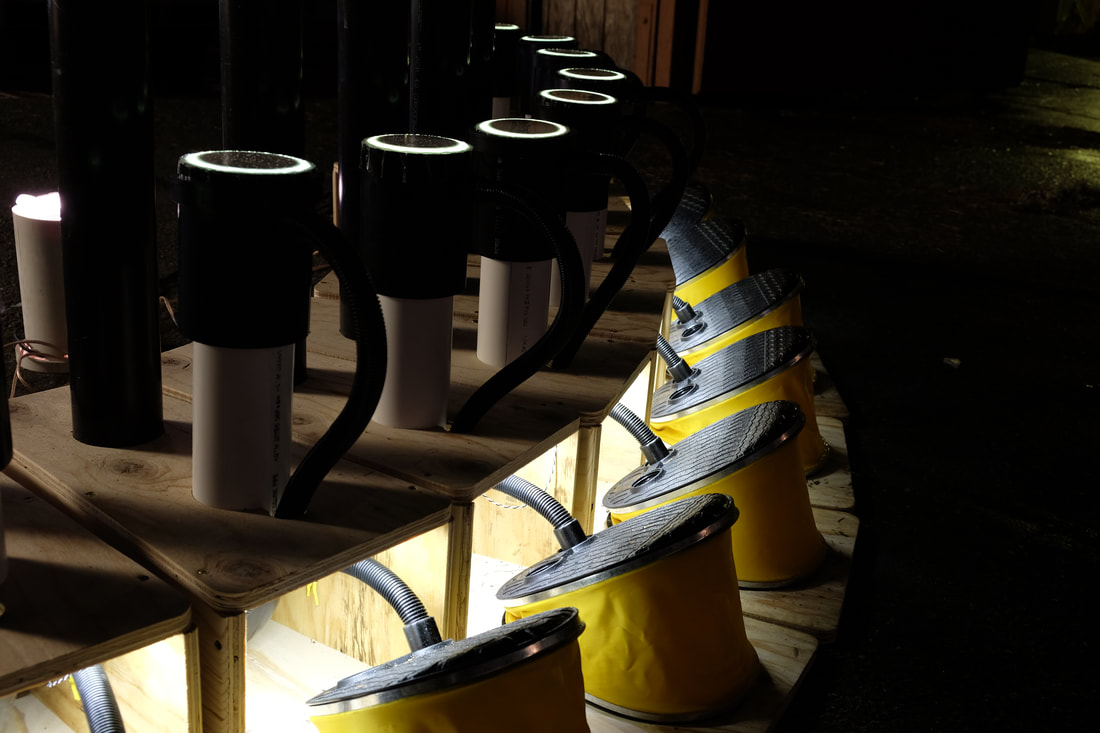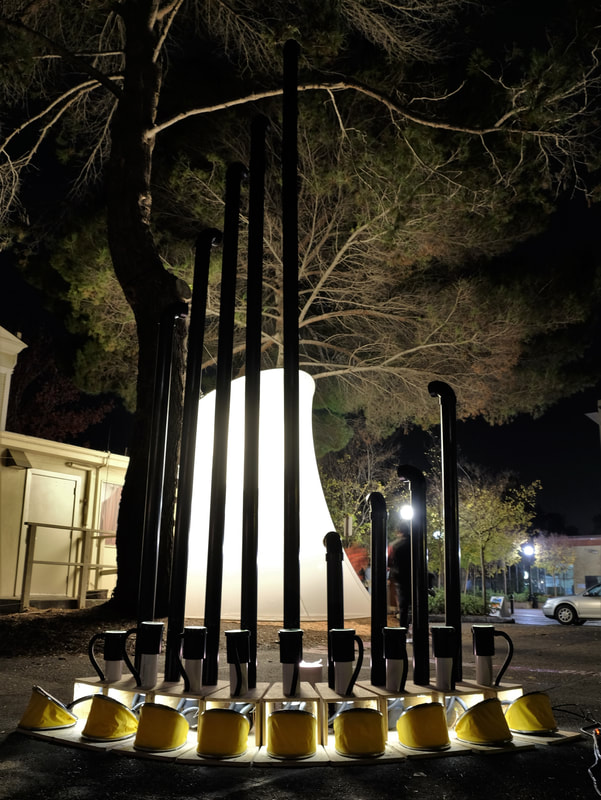|
|
sHow it works:
The diaphragm, set in resonant motion by air from the bellows, vibrates up and down, sending pressure waves along the length of the pvc pipe. The circular diaphragm resonates at the frequency determined by the length of the pipe, inviting people to explore fundamental principles of acoustics through experimentation. With a tap of the foot you can lean into a low, growling, guttural, elephant-like call that is raw and wild. |
|
Primal resonance is modular - each note has the same base structure and driving mechanism, but extends into a pvc pipe of a different length. To make the piece easy to build and remix by others, I choose materials that were readily available, inexpensive, and could be manipulated with everyday tools. The base design is shown in exploded view below: a simple plywood box encloses and supports two concentric PVC pipes that fit snugly together between cork and o-ring spacers.
The Process:
Inspired by my exploration of simple musical instruments for children, I wanted to build an enormous version of my flarinet design that could express a range of low frequency elephant-like rumbling notes. Beginning with a simple concentric tube design, I first prototyped the instrument in miniature. I created a simple, well-functioning diaphram by combining packing tape and acetate film and explored nesting tube tolerances with various combinations of cork and o-ring thicknesses. Once the miniature instrument worked, I began experimenting with much longer tubes. Using large cardboard mailing tubes, I learned what pressure was necessary to drive the instrument and what frequencies sounded best in a lower range.
It was equally important that the instrument be able to be played both during the day and at night. Through testing several sheet materials, I discovered that a diaphragm composed of packing tape and vellum was not only an ideal material for low note vibrations but was also a beautiful diffuser of light. Nesting LED light strips in between concentric PVC tubes, created glowing light rings that illuminated the diaphragms, the instrument's source of vibration.
To minimize interference with the instrument's acoustics but still provide power to the LED lights, I snaked wiring along the interior column of the PVC pipe exiting at the exact distance where the light ring began.
Finally, I needed a way to mechanically drive the instrument. Vacuums and electric pumps drowned out the instrument's notes, so I tested several hand and foot pumps, eventually settling on a ubiquitous, low-cost foot pump that was intuitive to use and generated enough pressure to drive the instrument's diaphragms for sustained notes without significant effort.
Primal Resonance created a playground of sound where people could collaborate to create loud low-note frequencies and cacophonous melodies that could be heard in a quarter mile radius. Physical sound experimentation gave people the freedom to explore weird and wacky sound together with their whole bodies. The piece's modularity allowed people explore various configurations of the instrument. A circular layout unified a large group in sonic play while a fan layout afforded a dance and sound performance by a smaller number of players.
|
